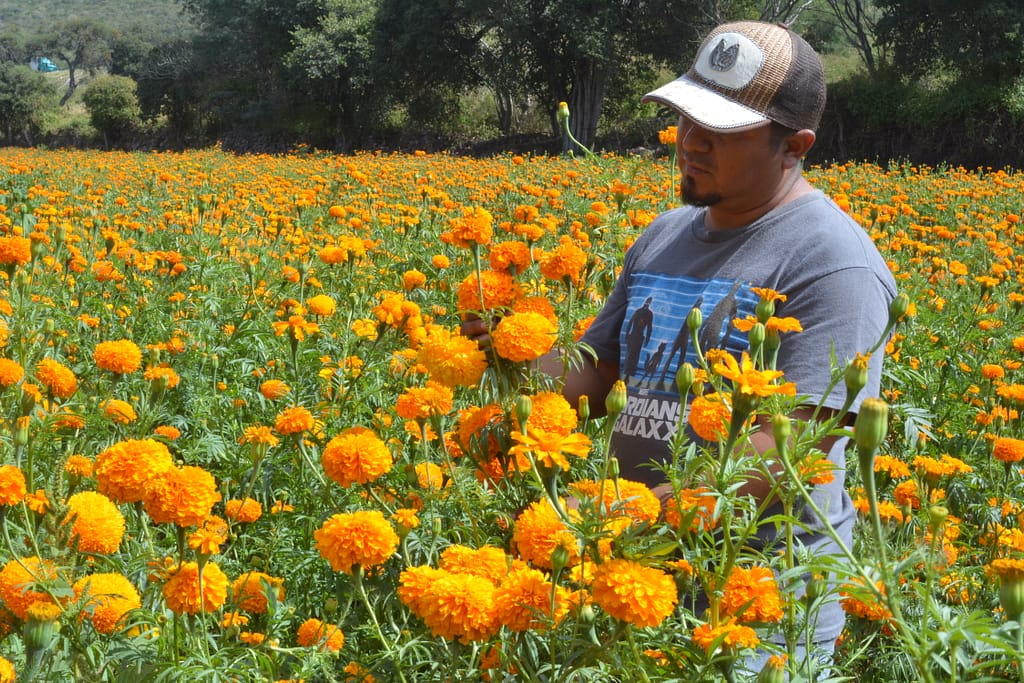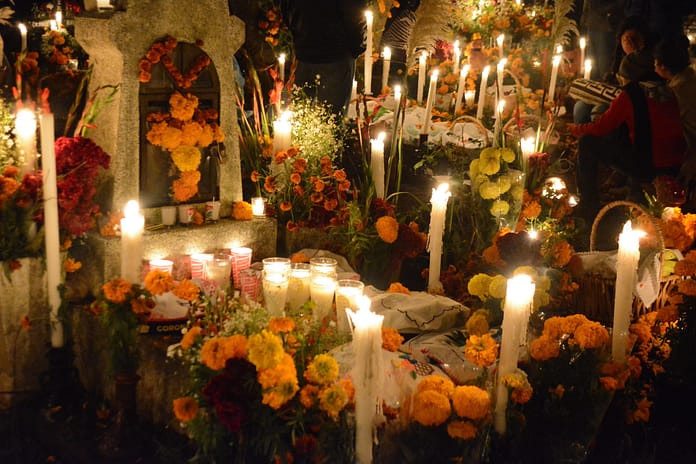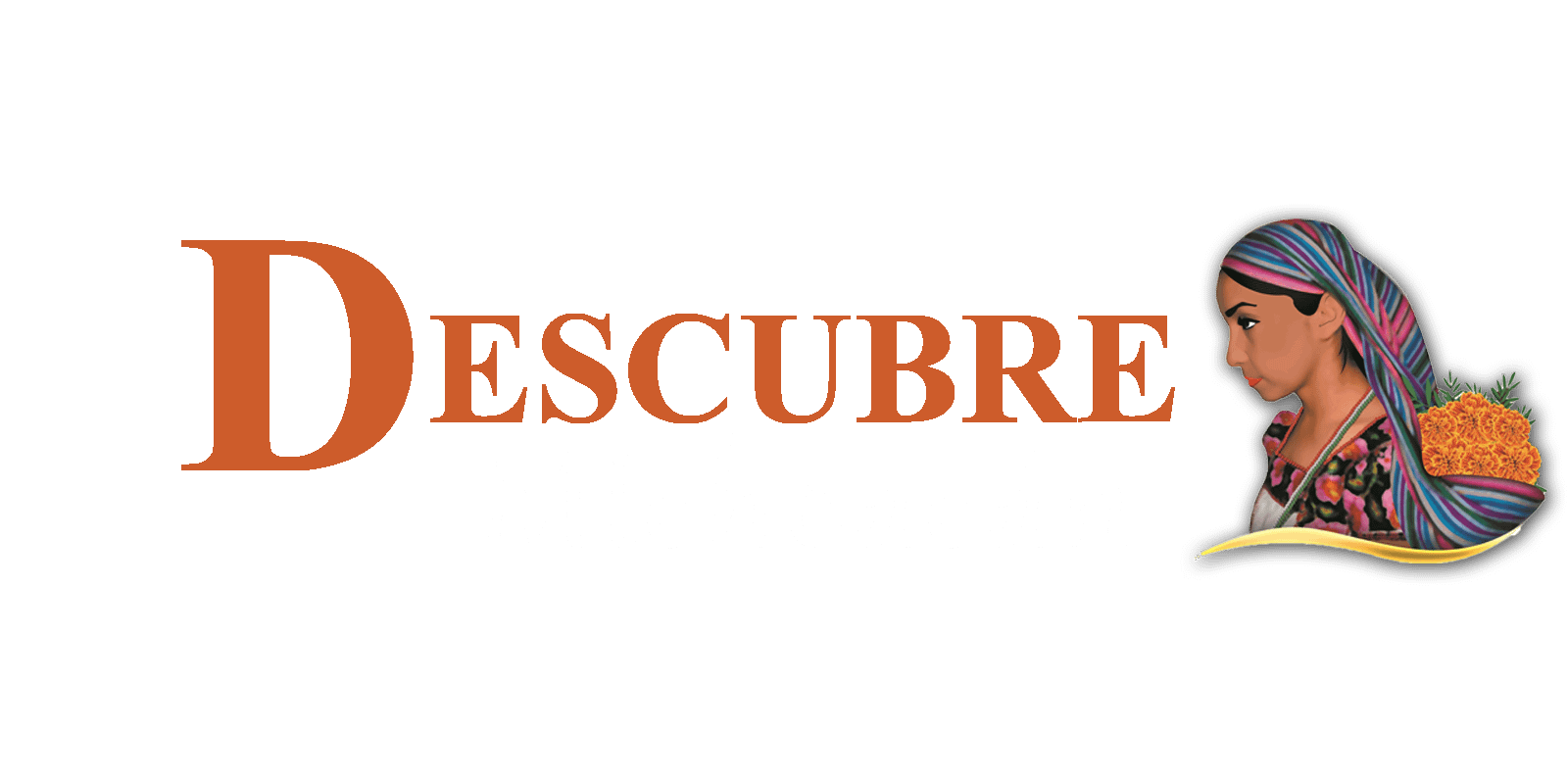The Day of the Dead in Mexico is one of the country’s most iconic and meaningful celebrations. Day of the Dead activities are experienced with intensity in regions such as Michoacán, Mexico City (CDMX), Oaxaca, Guanajuato, and some areas of Campeche, where rituals, altars, parades, fairs, and family gatherings honor the memory of the deceased with joy and mixed emotions.
Michoacán
Around Lake Pátzcuaro, communities such as Tzintzuntzan, Janitzio, and Ihuatzio celebrate the Day of the Dead by gathering around tombs, surrounded by candles, marigold flowers, music, and offerings of the deceased’s favorite foods. The celebration is a moment of remembrance, closeness, joy, and nostalgia, where the sadness of losing a loved one blends with the vibrant celebration of the night of the spirits.
In Morelia, starting around October 20th, the city transforms: every corner is decorated, Catrina parades are held, altar competitions take place, and the iconic Fray Antonio de San Miguel avenue becomes a focal point of Day of the Dead activities.
A few kilometers away, in Capula, the Catrina Fair turns clay into local crafts, delicate figures representing the festivities. This fair not only showcases the artisans’ creativity but also connects with the essence of Day of the Dead activities: honoring the deceased with art, culture, and devotion. Together, these experiences make Michoacán the most authentic and emblematic epicenter of the celebration in Mexico.
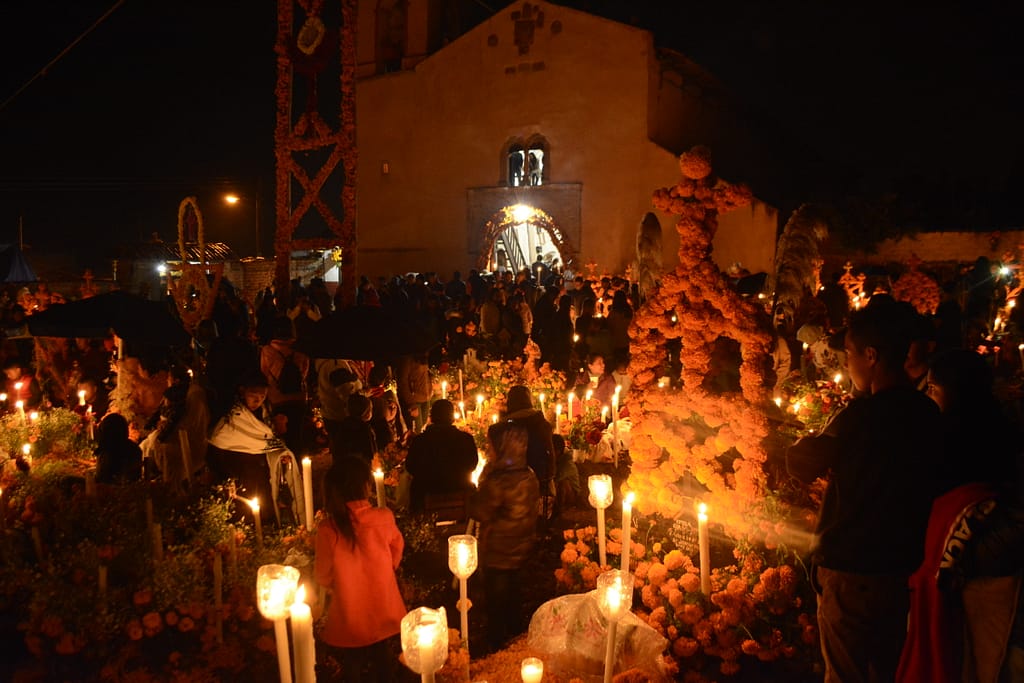
Guanajuato
In Guanajuato, Day of the Dead activities focus mainly on tourism and urban decoration. The city fills with decorations related to the Night of the Dead, public altars, offerings in plazas and alleyways, as well as cultural events and tours for visitors who want to enjoy the festive and colorful atmosphere of the season. Although these are not cemetery rituals, the city offers an attractive experience combining tradition and tourism during this period.
Mexico City Mixquic
In San Andrés Mixquic, Tláhuac borough, Day of the Dead activities take place in the cemetery illuminated by thousands of candles, known as the Alumbrada. Additionally, the capital has incorporated modern expressions: the Catrina Parade, the Monumental Offering at the Zócalo, and performances such as La Llorona in Xochimilco, attracting thousands of visitors.
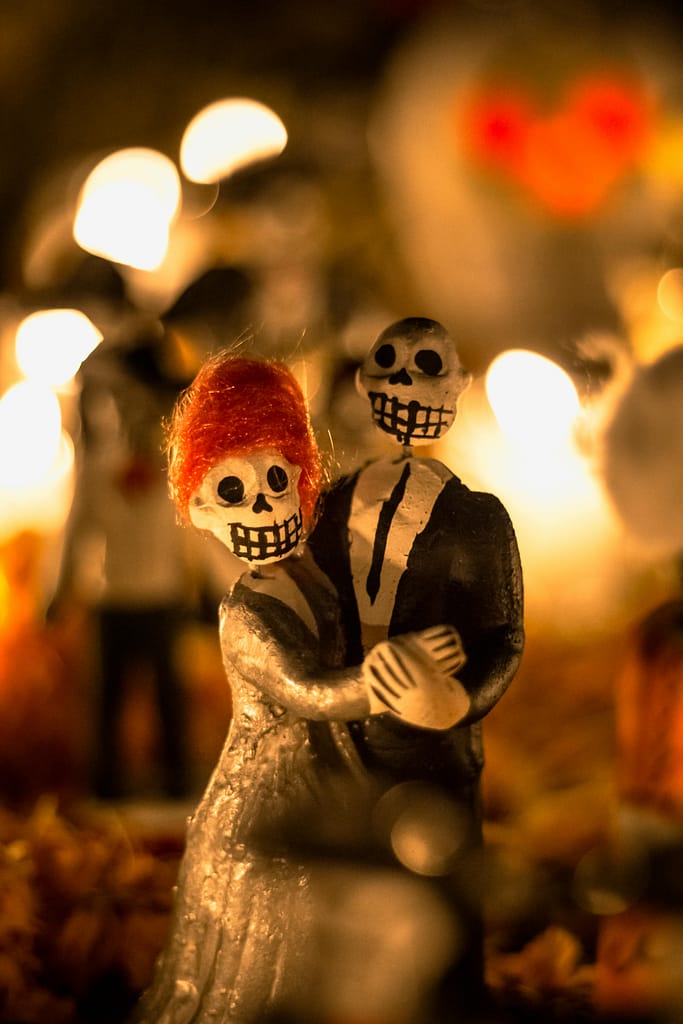
Campeche: Pomuch
In the town of Pomuch, the activities stand out for a unique and striking ritual: families remove bones from tombs to clean them and place them in wooden boxes with hand-embroidered cloths—a true act of respect, care, and love for those who have passed away.
Oaxaca
In Oaxaca, the streets fill with parades, music, and costumes that move through the neighborhoods. Families set up altars inside and outside their homes, sharing the celebration with neighbors and visitors. The combination of music, food, and rituals makes this region stand out for its color and warmth.
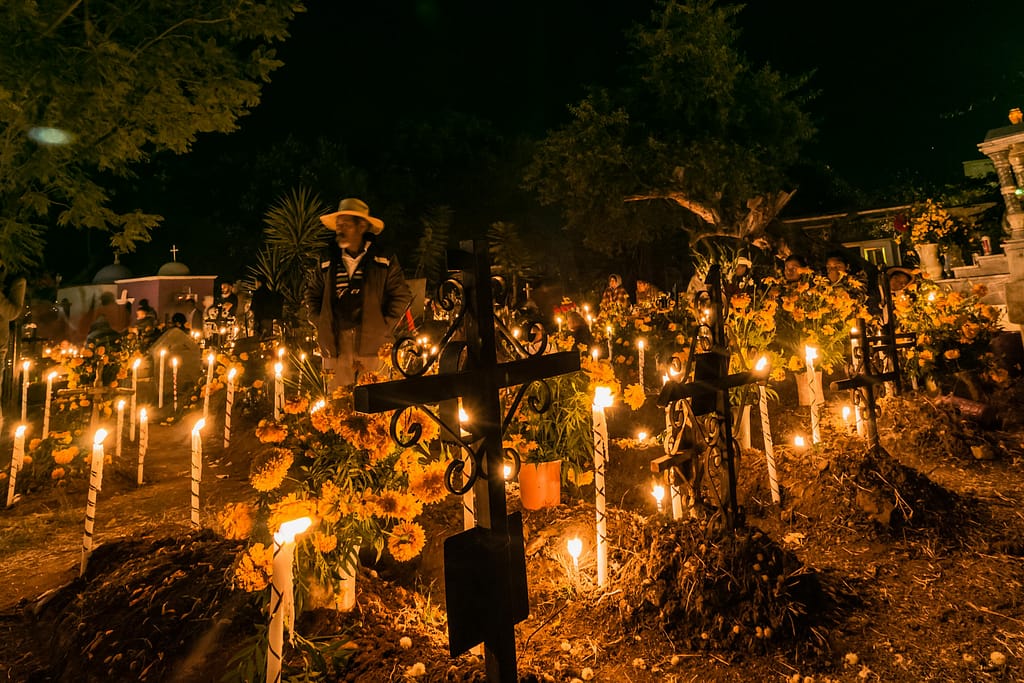
Other expressions in Mexico
Bread of the Dead fairs and gastronomic festivals in various cities.
The UNAM mega-offering and cultural exhibitions in museums and public plazas in CDMX.
Conclusion
Day of the Dead activities are not the same throughout Mexico. In some regions, they are intimate and family-oriented, while in others, they become open and community celebrations. In all cases, the essence is the same: remembering the deceased with love, respect, joy, and mixed emotions, honoring their memory while celebrating life.
Day of the Dead Activities
Discover the main Day of the Dead activities in Mexico: festivals, parades, offerings, and traditions that fill the country with color.
